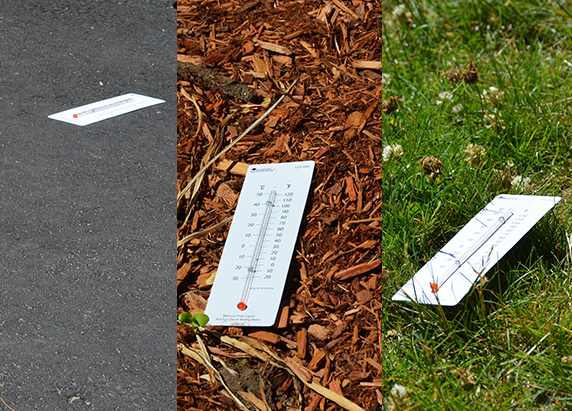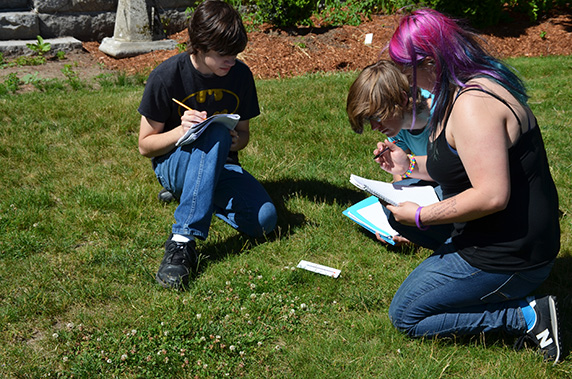Grade Level
9-12
minutes
1- 2 hrs
subject
Earth Science
Activity Type:
design, hands-on activity, albedo effect, glaciers, urban heat island

Have you ever worn a black t-shirt outside on a summer’s day and felt terribly hot? Or have you ever walked through a parking lot on a summer day and felt relieved when you got to the sidewalk? Both of these scenarios involve something called albedo, which is a measure of how much radiation from the sun is reflected by surfaces on earth.
In this activity, you will observe how different types of surfaces change temperature in direct sunlight and learn how albedo relates to those changes. Then you’ll apply your understanding to designing a multi-use outdoor space for a school’s playground that stays cool even when it’s hot out.
See the Educator’s Toolbox below for student worksheets, audio transcripts, and other classroom tools.
Let’s get outside and explore the albedo effect!
If it is a sunny day, you can go outside and investigate the influence of albedo by measuring how quickly different surfaces warm up in sunlight.
Materials
- 3-6 thermometers
- Outdoor Surfaces and the Albedo Effect Worksheet
- Timer
Make a Prediction
You will place each thermometer in one of the following locations: on or near the edge of some blacktop pavement, a grassy area, and on or near a patch of dirt. Before you go outside, predict which location will show the greatest change in temperature over a 10-minute period. Record your predictions on your Exploring the Albedo Effect Outdoors Worksheet.
Discussion Questions
- Which surface showed the largest increase in temperature?
- How did your predictions line up with what you observed?
- Describe each of the surfaces/locations you tested. Think about color, shape, size, proximity to other surfaces/shade, etc. Use your descriptions to analyze your temperature results and rankings. Why do you think you got the results that you did?
- What is the relationship between color and the temperature increases you observed?
Learn About Albedo

Albedo is measured on a scale of 0-1. A 0 means that the surface of a material absorbs all of the sunlight that hits it. A 1 means that a material reflects all of the light energy that hits it. In other words, a 1 on the albedo scale means 100 percent reflection. A 0 means no reflection.
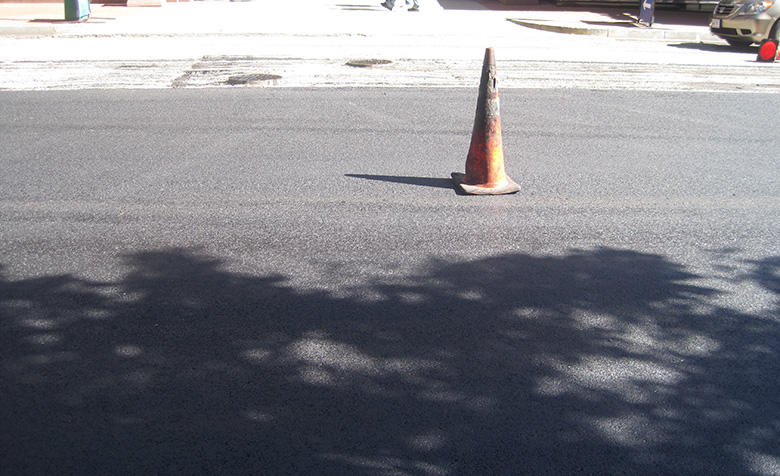
Fresh asphalt, for example, has an albedo of around 0.05, which means that only 5 percent of the light is reflected. The rest—95 percent—is absorbed.
In general, lighter-colored materials reflect more sunlight than darker colors and therefore have a higher albedo. Why do darker materials feel hotter than lighter ones when both are exposed to sunlight for a period of time?
When a material absorbs solar radiation, some of that light energy is converted into heat energy, and the material warms up. That’s why an asphalt parking lot will feel hot if you walk across it on a sunny day.
In the previous activity, you measured the temperature of several types of surfaces around your school. The albedo of each surface played a role in how much the temperature changed between your first and final measurements.
It’s important to note, though, that a surface’s albedo isn’t the only property that affects how warm or cool a surface becomes upon exposure to sunlight. For more on other phenomena at play, see this video and article from NASA.
Albedo and the Urban Heat Island Effect

If a dark section of pavement absorbs more of the sun’s energy than it reflects, then that section will feel warmer over the course of a sunny day. How do you think the effect of albedo could impact a city?
In developed areas with lots of buildings and people, the effect of albedo can contribute to a phenomenon known as an urban heat island, which is a region whose average temperature is higher than surrounding rural areas.
Researchers at NASA Goddard study the urban heat island effect using satellite maps that show visible light, land development, vegetation cover, and a quality called brightness temperature. For purposes of this activity, think about brightness temperature as a proxy for surface temperature, similar to what you measured in the first part of this activity.
Examine these two images of Providence, Rhode Island.

- What is the relationship between the developed land and the brightness temperature?
- What do you think it would feel like to be in a developed area during a hot summer’s day?
- Would it feel different to be in an undeveloped area during that same time? Why?
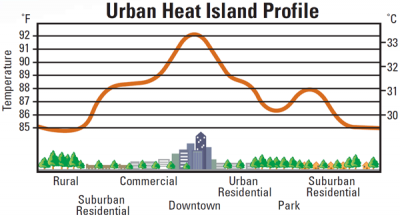
In this Science Friday interview, listen to Science Friday associate producer Alexa Lim explain the urban heat island effect and talk to research ecologists Rich Hallett and Nancy Sonti at of the U.S. Forest Service in New York City about the role that urban trees can play in mitigating its effects. Use the information provided in this clip, as well as this resource from NASA’s Earth Observatory, to answer the following questions.
- How do trees help lessen the impacts of the urban heat island effect?
- How do the data you collected outside connect with the phenomenon described in this media piece?
Design and Build a Multiuse Outdoor Space

Imagine a school that, due to limited space, has to hold recess out in the parking lot. But it gets very hot on the blacktop, especially at the start and end of the school year when outdoor temperatures are high. Some days it is even too hot to play any games comfortably.
The school wants to find a way to cool down their parking lot playground while still keeping some parking spaces for special events in the evenings. To help them, you will design a prototype of a new parking that will lower the temperature over the parking lot.
Design
Using your new understanding of albedo and the urban heat island effect, what can you do to cool down this school’s blacktop surface? More green space? More light-colored paint? Use the brainstorming space on the Albedo Design Worksheet to sketch out possible ideas.
As you are designing your solution, consider the following constraints:
- The lot is roughly 90 feet x 100 feet.
- The school currently has space for 36 parking spaces (four rows of nine spaces each), with each parking space measuring about 9 feet x 18 feet.
- The school is willing to sacrifice up to 15 spots if doing so means that its students will be able to get more out of their recess.
Build a Cooler Playground

Now it is time to build your design. To represent the parking lot, for example, you can use a 9-inch x 11-inch rough grit, dark sandpaper or asphalt shingles, or any flat material that will absorb light energy. To represent a garden you can use potting soil or mulch. Green space can be represented by shredded spinach or lettuce. White paint can also be used to paint patterns like four square courts.
Using these materials, replicate your design on your 9-inch x 11-inch rectangle of “parking lot.” Keep one piece of 9-inch x 11-inch sandpaper or asphalt shingle to represent the original parking lot for comparison during the testing phase. This is your control. You will test the temperature of your redesigned parking lot with your control to see if your design is effective at lowering the surface temperature.
Test Your Design
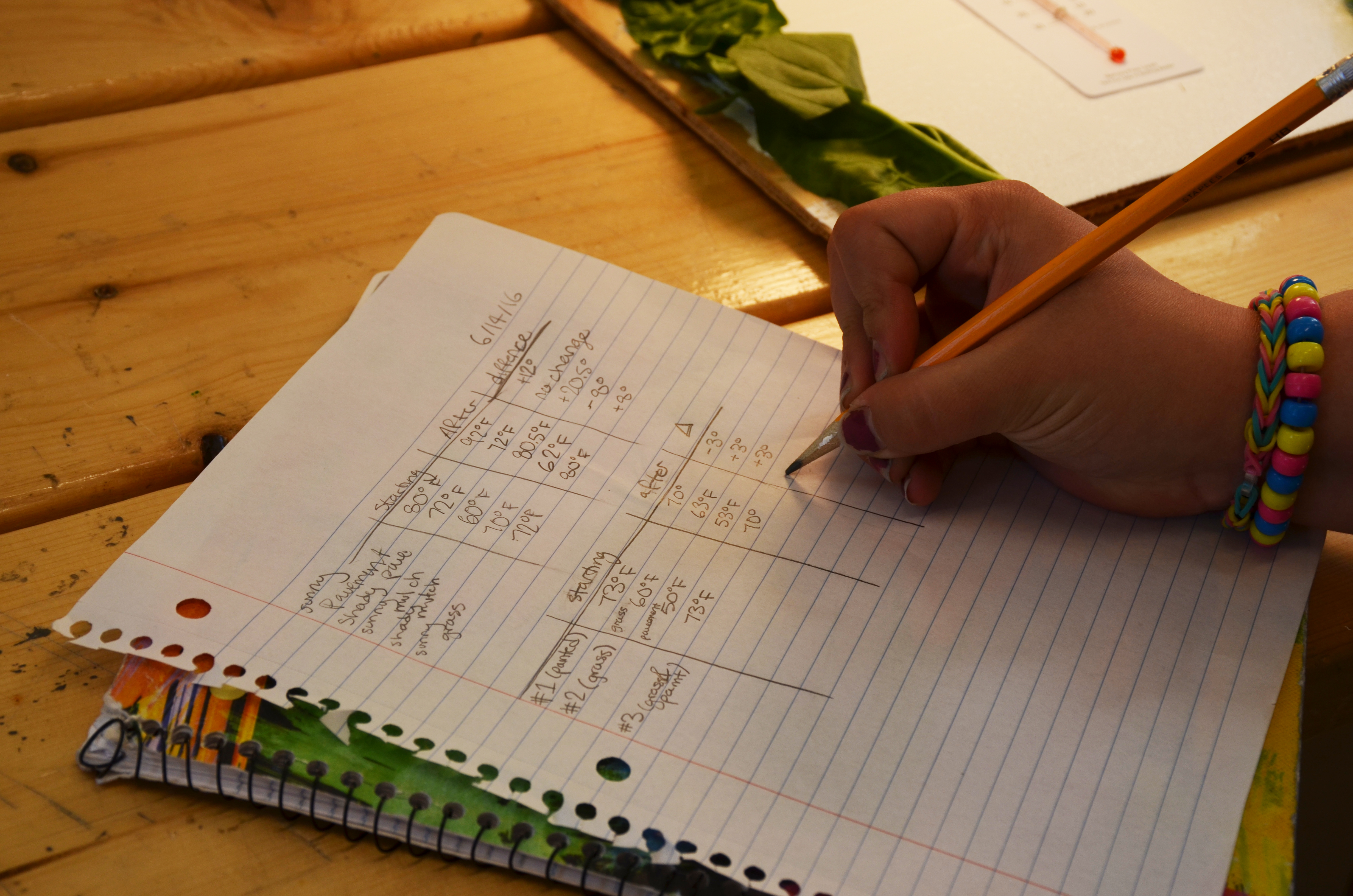
After you finish putting together your prototype, measure the temperature over your newly re-surfaced parking lot and over the unchanged parking lot. Then turn on the lamps over the two lots, giving the thermometer at least 10 minutes to register a temperature change. Record these measurements on your Albedo Design Worksheet.
Discussion Questions
- Did your design achieve a lower temperature than the control parking lot?
- How did you preserve the open space for parking?
- Which design elements do you think had the largest impact on the final temperature? Design an experiment to test your conclusion.
- Share your designs. After listening to other people’s ideas, what would you want to try next?
We want to see what you or your students designed!
Submit pictures of student designs in the comments below.
Albedo and Positive Feedback
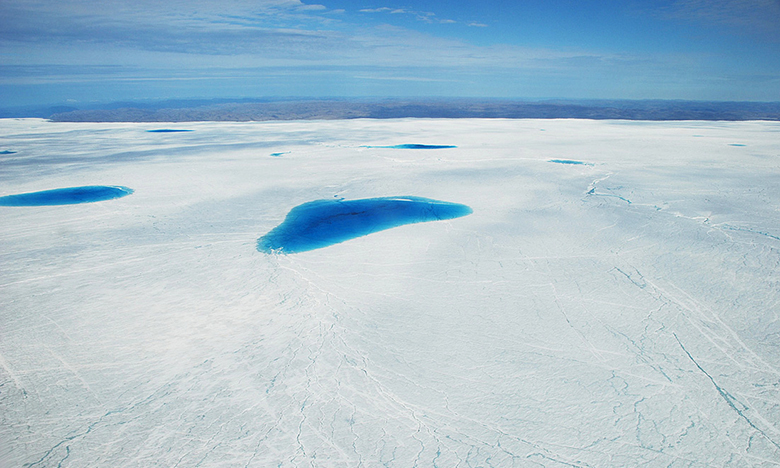
If albedo can impact how hot a school parking lot feels, how might it affect an ice sheet that is hundreds of thousands of times larger? As you will see, there are profound implications for the melting of the world’s glaciers and ice sheets. Ice is light-colored and therefore has a high albedo (about 0.7). On the other hand, water—like oceans, lakes, and rivers—is relatively darker and has a lower albedo (about 0.6). Just as paved surfaces warm up in the sun, so does water. When water that surrounds ice or that sits on top of ice gets warm, it can cause ice to melt. And the more ice that melts, the more water there is to heat up and melt even more ice. This is an example of positive feedback, a process whose results enhance the process itself.

A big body of water that lies on top of an ice sheet is called a supraglacial lake. To get a sense of the scale of such such a lake, examine this interactive, and consider the following questions:
- Can you adjust the red square to be roughly the size of your outdoor multi-use space (90 feet x 100 feet)?
- How much larger are the lakes than your parking lot?
- How much darker does the water appear than the ice?
- What impact do supraglacial lakes have on the average albedo of the glacier?

Listen to Andrew Shephard, the director of the Center for Polar Observation and Modeling, discuss how supraglacial lakes affect the rate of melting of Greenland’s ice sheets.
- How large are the supraglacial lake features?
- How are they contributing to the overall movement of the ice sheets in Greenland?
- How does this relationship connect to your investigation of albedo?
Albedo Reflection: How Do Wildfires Impact Greenland?

This past spring, there were large wildfires in Canada. Global wind patterns carried soot from these fires onto the Greenland ice sheet.
- Based on your study of the albedo affect, how do you think this soot affected Greenland’s albedo?
- What role do you think that more wildfires will have on the overall stability of the earth’s polar ice sheets?
Recommended Resources
Earth’s Energy Balance (from UCAR)
Can trees really cool our cities down?
Urban Heat Islands (from UCAR)
Educator's Toolbox
Meet the Writer
About Katharine Hinkle
@KatharineHinkleAs a high school earth science teacher at Innovation Academy Charter School in Massachusetts, Katharine Hinkle’s unflagging goal is to get her students excited about venturing outside and observing their environment. She wants her classes to understand how familiar landscapes form and how scientific issues play out in their local communities.

